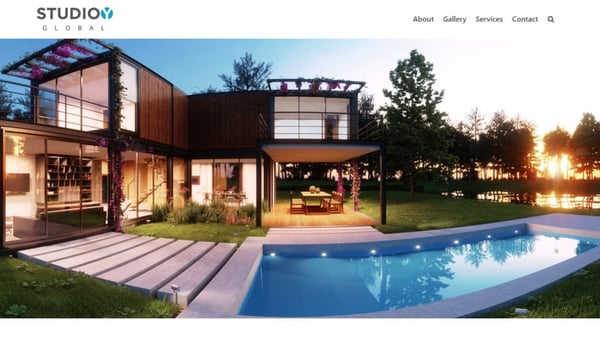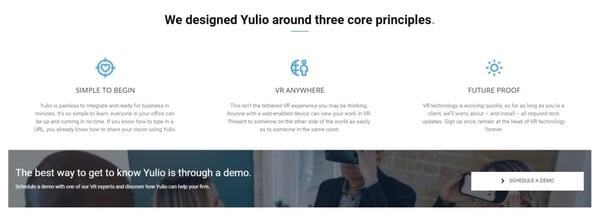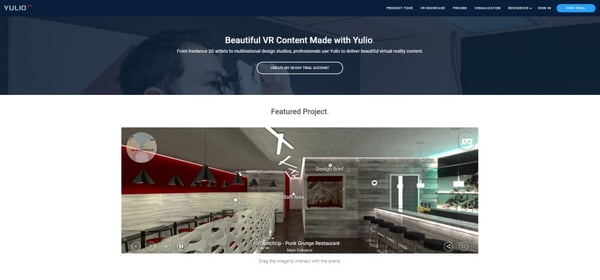For interior design firms, it can be challenging attracting potential clients, let alone clients that are seeking your specific services. The barrier that many firms face when marketing their services is that traditional marketing strategies were too expensive and didn’t bring as much awareness to their business.
So what can you do?
Let us introduce you to the term: digital marketing.
In short, digital marketing helps you spread awareness and pair clients looking for a service that you can provide all through using technology. This includes online social media platforms (ex. Facebook, Instagram etc.), email, as well as search engines like Google or Bing.
Nowadays, the majority of businesses have taken the plunge into digital marketing to increase their brand awareness and exposure. Whether you’re a large design firm or a freelance interior designer, investing your time and resources into digital marketing can take your business to the next level.
Here are 5 digital marketing tips that will help attract the right clients to your interior design firm.
Tip #1: Create an Eye-Catching Website
A company website not only provides visitors with information about who you are and the services you provide but more importantly it is an extension of your corporate brand. You may already have a website that transitions visitors to potential customers, however, your site could be underperforming because of its lack of visual appeal.
Once a website is launched (however many years ago), many companies don’t think twice to update content or refresh the look and feel of the site. Although it is common for businesses to get away with this oversight, your interior design firm cannot.

Whether someone finds your website through word of mouth, your search engine ads, or even scrolling through social media, your website will be your prospective client’s first impression of your business. The purpose of a website for your interior design firm is both to state the services you provide AND showcase your ability to create beautiful designs. Competing in an industry with heavy importance on visual selling, we recommend designing an image-based website. A clean format with eye-catching and elegant imagery will demonstrate your dedication to quality workmanship while highlighting the level of skill your team executes. Always remember that the quality of the image matters. So, use only the highest quality images to represent your company online.
Tip #2: Make it User-Friendly
Along with making your website visually pleasing and eye-catching, making it easy to navigate and user-friendly is equally as important. Having a confusing website is not only extremely frustrating for visitors, but it can deter your prospects from staying on your site long enough to learn about your firm.
Here are some considerations when setting up/redesigning your website:
Is your website easy to navigate on a mobile device?
Up to 70% of web traffic happens on a mobile device and the numbers are set to rise to 80% in 2019. More and more consumers are starting to conduct their search on inquiries they have on their mobile device, and being compatible with the format has become an important part of digital marketing. Don’t assume that the format you see on your desktop will be the same on a mobile device.
Call to Action (CTA) Placements
Let’s say that your prospect has browsed your website, is interested in a service you can provide, and wants to get started but doesn’t know where to go next. As you make/redesign your website, it is your responsibility to make the conversion process as simple for your prospect as possible. If you’re not sure where to begin with your CTA placement, you can try placing it after you have listed the services you provide.

Tip #3: Strong Copywriting
Being an effective copywriter is a skill that is a crucial element to all forms of your marketing content. If you’re unfamiliar with the term, copywriting is writing text with the intent of getting the reader to take some form of action on the information you’re sharing with them.
The beauty of copywriting is that anyone can have this skill. How do you do it?
Practice, practice, practice.
You don’t need any degree or diploma to be a copywriter, but just a robust understanding of language, your business, and how to steer someone into action.
In regards to your interior design firm’s case, what you want to focus on is communicating your services in a clear and concise manner. If you think from your perspective, seeing a large chunk of text on a website is a huge deterrent -- you’ll probably click out of the site before even giving the text a read. Plus, if the text is purely just about your services and nothing else, the experience can be really boring. As you can see, your copywriting can really make or break your prospect’s interaction with your business.
We recommend making your copy as short and sweet as possible -- the quicker you get to the point, the better. Additionally, incorporate words like “you” or “your” into your copy to make your prospect feel like your services are specially catered to them. Doing so makes your prospect feel like you are interacting with them even before making any official contact.
As always, your copy should prompt your reader into some sort of action. Whether it be to fill out a form for more information or to request a quote, always include some form of Call to Action at the end of your copy.
Tip #4: Make your Social Media Presence Known
Social media has taken the world by storm, and there’s a reason for this phenomenon. To put it simply, most people nowadays have some form of social media and are already interacting with brands on their chosen platforms. Social media has become a powerful and relatively cost-effective tool in fostering brand awareness and greater interaction with your current clients and prospects.
Utilizing social media in your interior design firm can help with the legitimacy of your company, allowing you to connect with your audience and build an online presence. If you are unsure of where to start with social media, we recommend focusing on platforms like Instagram, Facebook, and LinkedIn (these are our recommendations, but they’re absolutely subject to change depending on your target demographic).
We mentioned Instagram first as it’s largely a visual social media platform that allows you to showcase your latest designs. Not only that, but you can also document the design process through short videos and Instagram Stories as a way to engage with your audience and showcase your skills to attract greater attention.
Facebook is another widely popular platform as there are approximately 2.38 billion monthly active users. Compared to the other social platforms, Facebook has a wide network and enormous reach and can help you connect to prospects looking for your services.
LinkedIn is an Enterprise-oriented media platform that is used for professional networking and all things related to business. Although it is a more niche media platform, establishing your presence on LinkedIn is one big step in establishing your firm’s legitimacy online. Plus, you are able to connect with your clients and post your firm’s latest news to keep your current customers informed.
Tip #5: Be a Step Ahead of your Competition
A telling sign of a successful business is its commitment to incorporating the latest technology into their marketing strategies. Be mindful of how other design firms are marketing themselves online and research how they are staying competitive in the market. Understanding your competition is the first step into how you can improve your marketing strategy. One way to create a competitive advantage and take your interior design marketing strategy to the next level is to incorporate an element of Virtual Reality (VR).
VR provides an interactive experience that can spark interest in your prospects. One way to incorporate VR into your digital marketing strategy is to embed a VR project into your website.

For example, under the VR Showcase tab on our Yulio page, we have embedded a VR project that demonstrates what our product can do. Similarly, you can do the same for your interior design firm. Instead of opting to use a static image as your hero image on your website, embed a VR version of a previous project to highlight your firm’s skills in design and to showcase your commitment to being current and up to date. Not only would using VR in interior design be visually pleasing for your visitors but having a unique element on your site can make a big difference.
Digital Marketing -- The Next Frontier
Technology opens up opportunities for your firm to increase brand awareness and to attract potential clients to discover who you are and the services you provide. Plus, it has advanced at such a rate where there is now a diverse selection of tech solutions that are both affordable and accessible, perfect for large and smaller firms. With following our 5 digital marketing tips, sit back and watch your interior design firm transform into something bigger and better than it was before.
Here at Yulio, we strive for excellence in performance and integrity when it comes to our product, and customer service. To learn more about how VR can enhance your business workflow, sign up for our FREE 5-day email course. If you’re interested in starting your first VR in design, click here to access our “How to Design in VR” Whitepaper for our full list of tips, tricks, and considerations when getting started.


.jpg?width=245&height=150&name=active-adult-beautiful-1799244%20(1).jpg)

.jpg?width=245&height=150&name=headway-5QgIuuBxKwM-unsplash%20(1).jpg)

